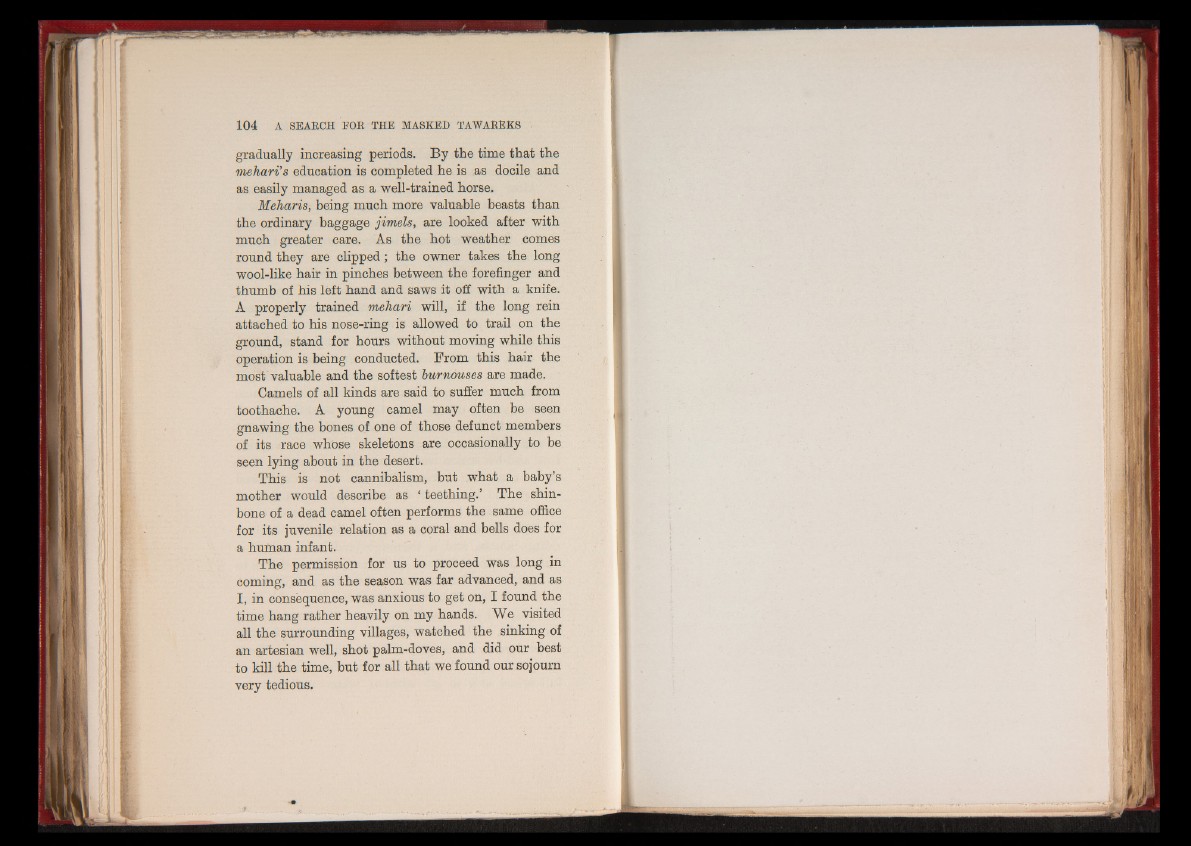
gradually increasing periods. By the time that the
mehari’s education is completed he is as docile and
as easily managed as a well-trained horse,
Meharis, being much more valuable beasts than
the ordinary baggage jimels, are looked after with
much greater care. As the hot weather comes
round they are clipped; the owner takes the long
wool-like hair in pinches between the forefinger and
thumb of his left hand and saws it off with a knife.
A properly trained mehari will, if the long rein
attached to his nose-ring is allowed to trail on the
ground, stand for hours without moving while this
operation is being conducted. From this hair the
most valuable and the softest burnouses are made.
Camels of all kinds are said to suffer much from
toothache. A young camel may often be seen
gnawing the bones of one of those defunct members
of its race whose skeletons are occasionally to be
seen lying about in the desert.
This is not cannibalism, but what a baby’s
mother would describe as * teething.’ The shinbone
of a dead camel often performs the same office
for its juvenile relation as a coral and bells does for
a human infant.
The permission for us to proceed was long in
coming, and as the season was far advanced, and as
I, in consequence, was anxious to get on, I found the
time hang rather heavily on my hands. We visited
all the surrounding villages, watched the sinking of
an artesian well, shot palm-doves, and did our best
to kill the time, but for all that we found our sojourn
very tedious.